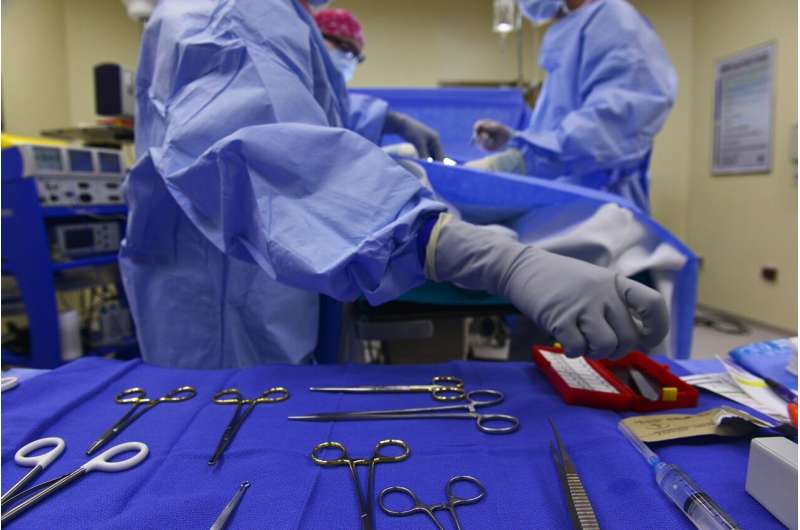Credit: CC0 Public Domain
New research published in Anaesthesia by researchers from the University of Bristol can help to improve the efficiency of surgery and help tackle the growing backlog of surgery caused by the COVID-19 pandemic. During the pandemic, the number of patients waiting for routine surgery in the UK has almost doubled with more than 5.3 million people awaiting surgery including more than 300,000 waiting more than a year.
A contributory factor is that COVID-19 precautions have led to many operating theatres working at 75-50% of normal working efficiency. Staff working in operating theatres have been required to take special precautions at the start and end of operations to allow viral particles to disperse from the operating theatre. This is based on the belief that anaesthetic procedures are 'high risk aerosol generating procedures' (AGPs) that produce a mist of small airborne particles called 'aerosols' that increase risk of infection to staff and other patients. These AGPs require the use of high grade personal protective equipment (PPE) and delays of up to 20 min both at the beginning and end of each operation.
New research from Bristol University has shown that routine anaesthetic procedures do not generate these aerosols and so should not be designated as AGPs. The researchers studied insertion and removal of anaesthetic airway tubes—called supraglottic airway devices (SGAs) - which are used in more than one and a half million UK operations each year. Working in an ultra-clean environment, the researchers used a highly sensitive aerosol detector to measure the amount and sizes of aerosol particles produced when the tubes were inserted or removed. The researchers found that the quantity of aerosol produced by inserting the device was no more than during quiet breathing and less than one twentieth of the amount of aerosol produced by a single cough.
The research is part of a wider AERATOR study which is funded by the National Institute for Health Research and UK Research and Innovation and is a collaboration between frontline clinical researchers and scientists from the Bristol Aerosol Centre. Research by the same group has already shown that more invasive anaesthetic interventions (tracheal intubation and extubation) and use of oxygen therapies (high flow nasal oxygen and CPAP) are much lower risk than had been assumed.
The research is described by the team as good news for patients, hospitals and staff.
Study co-author Professor Tim Cook of the University of Bristol and Royal United Hospital NHS Trust, Bath, UK, says: "This new research paves the way for more efficient anaesthesia and surgery. Supraglottic airways are normally used in more than half of all anaesthetics but have been avoided by many anaesthetists during the pandemic. Our research shows that use of these devices does not lead to high levels of aerosols and thus the procedure is not an AGP. Anaesthetists can return to using them and precautions around their use needs to be reviewed and relaxed."
He adds: "For more than a year concerns that basic airway procedures during anaesthesia put staff at risk have led to reduced theatre efficiency and surgical activity. Our research adds to growing evidence of the safety of these procedures and can hasten the return to efficient operating which is essential as we seek to address the backlog of patients awaiting routine surgery."
The research also raises concerns that PPE and other precautions to reduce transmission of infection in hospital may be misdirected.
Lead author Dr. Andrew Shrimpton, also of the University of Bristol, adds: "An important aspect of our study is the confirmation that coughing leads to around 25-fold more aerosol than these anaesthetic procedures. This adds to the existing and growing evidence that we need to refocus on the risk caused by coughing patients on hospital wards and away from medical procedures which are increasingly being shown to be lower risk. We are currently focusing excessively on procedures which are low risk. We need to focus more on staff caring for patients who are coughing on general wards where low grade PPE is used commonly for protection."
More information: A. J. Shrimpton et al, A quantitative evaluation of aerosol generation during supraglottic airway insertion and removal, Anaesthesia (2021). DOI: 10.1111/anae.15542
Journal information: Anaesthesia
Provided by AAGBI























